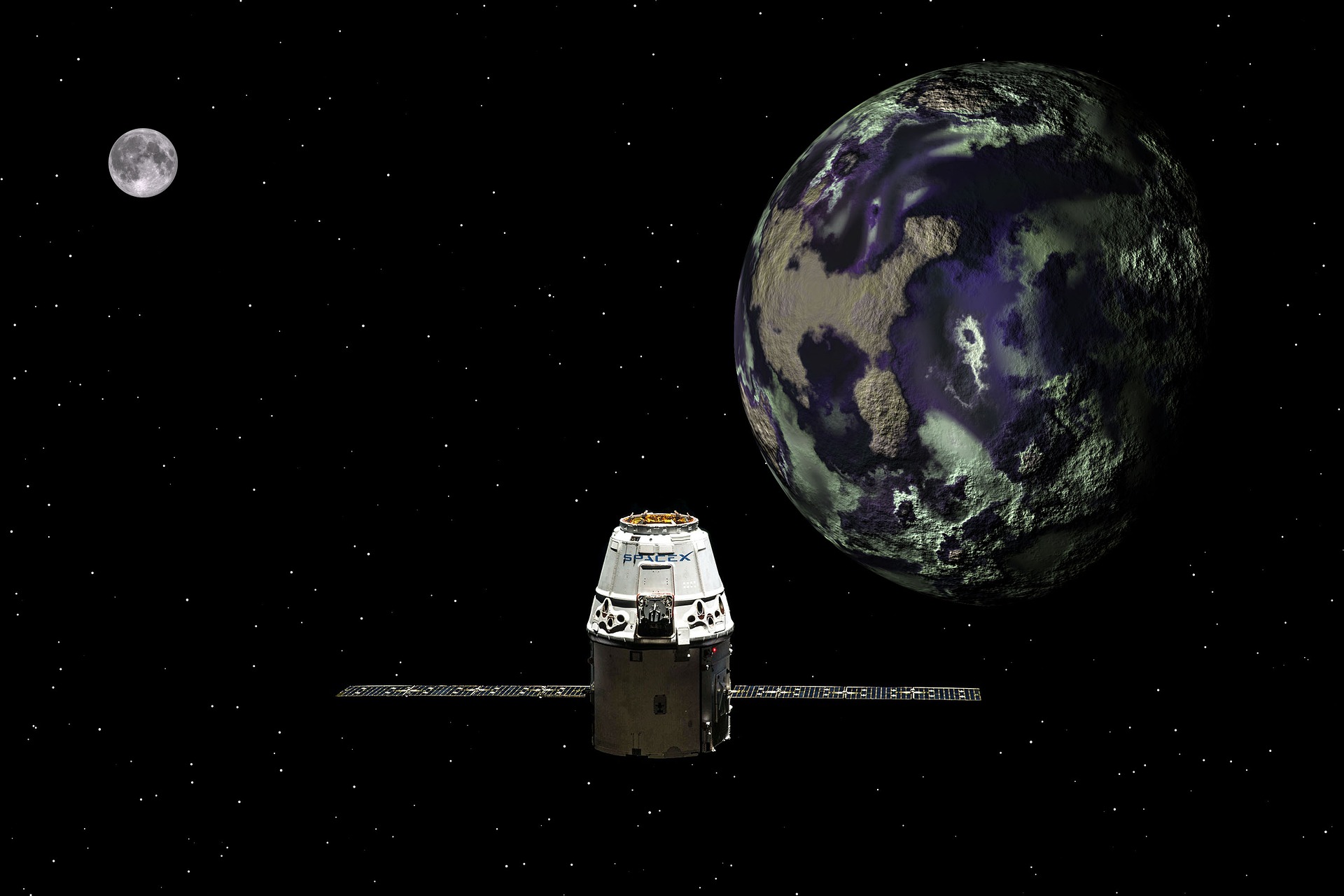Passion of the People – 1.7.8
Beyond Light Pollution: The Starlink Satellites Constellation
Starlink is a project by the private aerospace manufacturer Space X – Space Exploration Technologies Corp., funded by Elon Musk in 2002 – which plans to build a constellation of satellites able to provide global internet coverage. The thousands of miniature satellites in the constellation will be placed in low earth orbit (LEO) and will work with terrestrial transceivers.
Starlink development started in 2015, aiming at “building” the constellation by 2020. However, changes in technical features required an extension of the deadline. Prototype satellites have been deployed into space in 2018. Afterwards, thousands of Starlink satellites were successfully launched, amounting to a total of about 2091 satellites between 2018 and 2022. Pre-orders were opened to the public in February 2021.
With this project, SpaceX aims at guaranteeing a high speed, low-latency, permanent Internet connection to every user around the globe – mostly to people who live in rural areas and locations with no access to high-speed connection. Starlink is not the first project of its kind; several companies have already opted to transmit Internet data via orbiting satellites instead of cables. However, Elon Musk’s Starlink constitutes an unprecedented initiative because satellites very close to our planet – located in low orbit, about 550 km away from Earth – will be employed; furthermore, already existing satellites will not be used, as new ones will be sent into orbit. Low-latency is possible thanks to the satellites’ low orbit. Starlink technology entails a satellite system that relies on radio signals in the vacuum of space to transmit internet data. Earth stations have the task of transmitting signals to satellites located in orbit; these satellites will transmit internet data to users back on Earth.
How does Starlink work for service users? Connection will be possible by setting up a small satellite in clients’ homes, enabling them to receive the signal and passing the bandwidth on to their routers. Satellites can be mounted externally, e.g. on rooftops or in yards. To date, the service provided by Space X is active on all continents – however, it aims to further expand across the planet, not only allowing people to connect from their homes but also from moving vehicles and planes.
Despite the benefits and technological progress brought by Starlink, the project has been met with heavy criticism by the astronomical community, mainly because of light pollution. Indeed, astronomers maintain that visible satellites in the Starlink constellation will eventually outnumber visible stars – negatively impacting their brightness and scientific observations. Since satellites are very close to earth and reflective, they are easily visible to the naked human eye. However, they would constitute a problem for astronomers even if dimmed, as powerful telescopes used in observatories would still be able to detect them. If a satellite crosses the view of a telescope, the image can be ruined and require many corrections.
Another negative implication of Starlink satellites’ – and of its competitors as well – is that they can produce a diffuse glow in the night sky, fundamentally changing its view. This kind of light pollution differs from the one produced by city lights, as it can also impact sites located far from big cities, where dark skies would normally be untouched. Furthermore, concerns about space debris have also arisen – if a satellite disrupts in space, gravity can pull the junk back down to Earth.
SpaceX and similar companies cannot avoid light pollution; they can only try to reduce it. Elon Musk’s company has tested a satellite nicknamed Darksat, which was experimentally given a dark coating on one of its side to try to reduce its reflective brightness – SpaceX claims it was reduced by 55%, whereas the community of astronomers did not completely agree: some found the brightness was reduced but not to that extent, others that there was no significant darkening. These problems cannot be solved by SpaceX alone. Despite the company’s attempts at cooperating with astronomers, there is a need for international regulations to intervene and establish rules for satellites’ deployment by private companies, in order to preserve dark skies and allow their observation.


Further Resources
Links below will redirect you to external websites. In accordance with the European data protection declarations, we would like to point out that by clicking on these links you may send data to external providers. We cannot prevent that.
Videos
![]() How does Starlink Satellite Internet Work? – Branch Education
How does Starlink Satellite Internet Work? – Branch Education
![]() Starlink interference: Astronomers complain of satellite light pollution – Al Jazeera English
Starlink interference: Astronomers complain of satellite light pollution – Al Jazeera English
Online Resources
![]() The night sky is increasingly dystopian – Vox
The night sky is increasingly dystopian – Vox
![]() Astronomers are very frustrated with Elon Musk’s satellites – Vox
Astronomers are very frustrated with Elon Musk’s satellites – Vox
![]() As SpaceX’s Starlink Ramps Up, So Could Light Pollution – Wired
As SpaceX’s Starlink Ramps Up, So Could Light Pollution – Wired
 SpaceX, quanto influisce la costellazione Starlink all’inquinamento luminoso? – Start Magazine
SpaceX, quanto influisce la costellazione Starlink all’inquinamento luminoso? – Start Magazine
 E’ vero che i satelliti in orbita causano inquinamento luminoso? – ANSA
E’ vero che i satelliti in orbita causano inquinamento luminoso? – ANSA
Further Readings
Teaching Material
For Kids
